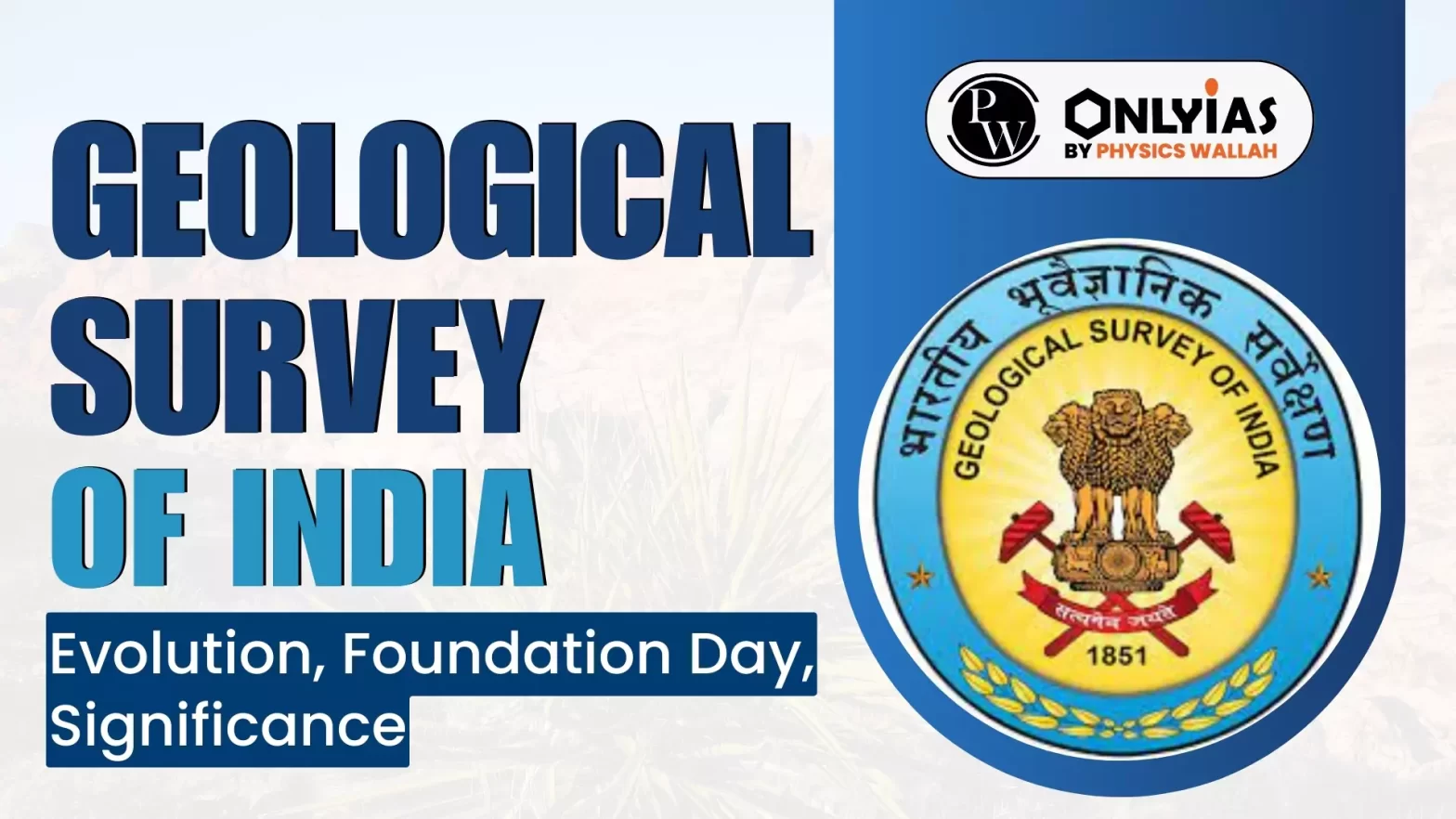Discover India's geological richness with the Geological Survey of India. 174 years of resource assessment, disaster management, and environmental protection.

Recently, Geological Survey of India (GSI) celebrated its 174th Foundation Day on 4th March, 2024.
The Geological Survey of India (GSI) is a scientific agency under the Ministry of Mines, responsible for conducting geological surveys and studies of India. It is one of the oldest of such organisations in the world and the second oldest survey in India after the Survey of India (founded in 1767).
Geological Survey of India (GSI) Restructuring into Five Dynamic Missions
Identifying and Safeguarding Geo-Heritage Sites and Relics in India
|
|---|
The Geological Survey of India has achieved and contributed significantly to the geoscientific knowledge and development of India. Some of the notable achievements and contributions are:
| Must Read | |
| NCERT Notes For UPSC | UPSC Daily Current Affairs |
| UPSC Blogs | UPSC Daily Editorials |
| Daily Current Affairs Quiz | Daily Main Answer Writing |
| UPSC Mains Previous Year Papers | UPSC Test Series 2024 |
The Geological Survey of India (GSI) is a scientific agency under the Ministry of Mines responsible for conducting geological surveys and studies across India.
The GSI was founded in 1851 by the East India Company, making it one of the oldest geological survey organisations globally.
The restructured GSI focuses on five main missions: Baseline Surveys, Mineral Resource Assessments, Geoinformatics, Multi-disciplinary Geosciences, and Training and Capacity Building.
Geo-heritage sites are areas of geological significance designated for protection, including geological relics, phenomena, structures, and landforms. Geo-relics are geological materials or relics of importance, such as sediments, rocks, minerals, and fossils.
The GSI has made significant contributions to India's geoscientific knowledge, including the discovery and assessment of various natural resources such as coal, oil, iron ore, manganese, chromite, bauxite, limestone, gold, diamond, uranium, rare earth elements, geothermal energy potential, and marine mineral resources.

<div class="new-fform">
</div>